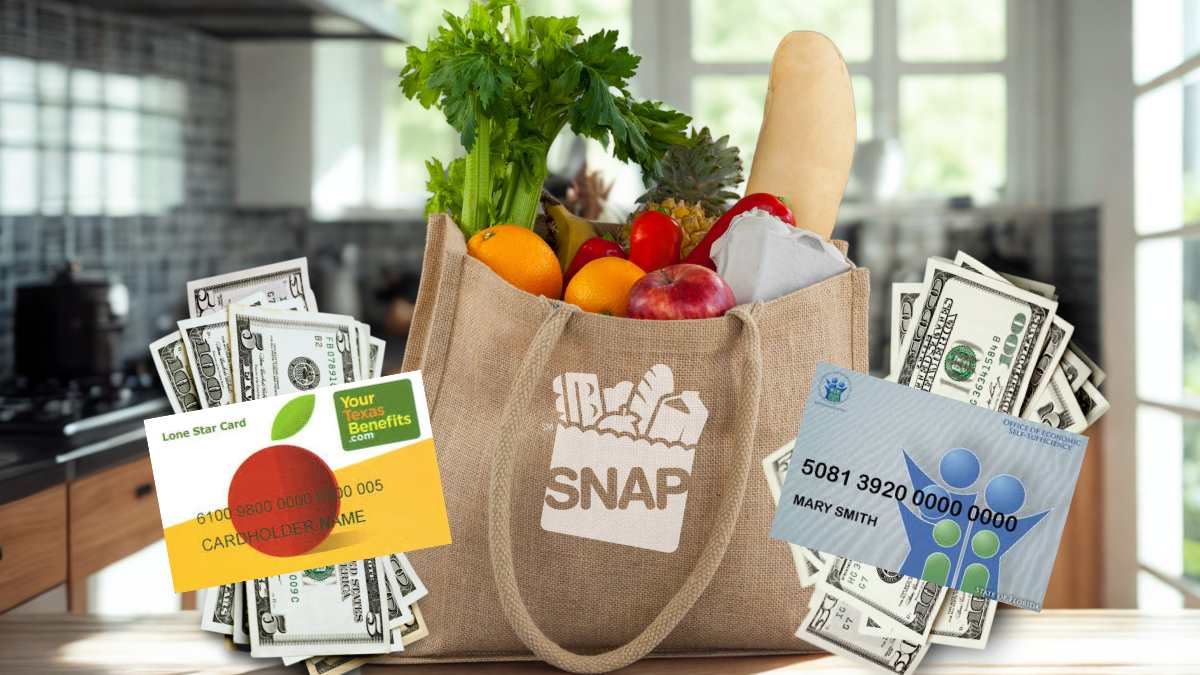The Supplemental Nutrition Assistance Program (SNAP) offers food support to low-income households. In May 2025, the maximum amount for families of eight is $1,756 in Texas and Florida (as well as in the rest of the 50 states, Washington DC, Guam, and US Virgin Islands). Eligibility criteria, application processes and payment dates vary between states, but they’re somewhat defined by the US Department of Agriculture (USDA).
The increase to $1,756 shows annual adjustments (the famous “COLA”), which were made to be applied in fiscal year 2025 (effective until September 30) based on the Consumer Price Index (CPI-W). This amount applies to all US states, also including Washington DC, Puerto Rico, Guam, and the US Virgin Islands, in line with federal policies. Income and asset limits are updated annually, taking into account household size and specific conditions.
The two states with the largest populations of SNAP recipients are sending payments
We have chosen two “witness” states to talk about the evolution of SNAP benefits in the United States. We start in Texas, where the program is administered by the Health and Human Services Commission (HHSC), serving more than 3.2 million beneficiaries in 2025.
Texas applies limits on gross income (165% of the federal poverty level) and assets ($5,000 for most). Programs such as the Texas Simplified Application Project (TSAP) simplify procedures for older or disabled adults. Payments are distributed via the Lone Star Card, with dates based on the Eligibility Determination Group (EDG).
The combination of large population, socioeconomic diversity, and policies like TSAP positions Texas as a key case for analyzing SNAP. Its focus on digital accessibility (YourTexasBenefits.com) and attention to vulnerable groups highlights its administrative model.
Now let’s talk about Florida: How does the SNAP program work in “The Sunshine State”?
In Florida, SNAP is managed by the Department of Children and Families (DCF), benefiting 2.97 million people in 2025. As the third state in participation, it faces challenges that other smaller states do not, such as the high cost of living in tourist cities and job fluctuations in sectors such as agriculture and services, due to high and low seasons in these industries.
Unlike Texas, Florida does not impose asset limits for most households. Their gross income limits (200% of the federal poverty level) are higher, and programs like SUNCAP automatically integrate SSI recipients. Payments are allocated via EBT card, with staggered distribution based on case number.
The absence of wealth limits and its adaptation to mobile populations (such as temporary workers) make Florida an example of flexibility in SNAP. Its digital infrastructure (ACCESS Florida) and focus on efficiency is often a case study for agencies in other states.
SNAP payment dates in the coming days in Texas and Florida
Between May 12 and May 20, 2025, the groups that will receive SNAP benefits in Texas and Florida depend on their case or EDG numbers, with variations depending on the date of certification.
A Texas:
For households certified before June 1, 2020, they will receive benefits on May 12 (EDG ends in 7), May 13 (EDG ends in 8), and May 15 (EDG ends in 9). There are no payments on May 14 for this group.
For households certified after June 1, 2020, they will receive benefits from May 16 to 20: May 16 (EDG 00-03), May 17 (04-06), May 18 (07-10), May 19 (11-13), and May 20 (14-17).
In Florida:
Between May 12 and 20, beneficiaries will receive benefits based on their case number: May 12 (39-41), May 13 (42-45), May 14 (46-48), May 15 (49-53), May 16 (54-57), May 17 (58-60), May 18 (61-64), May 19 (65-67) and May 20 (68-71).
The maximum amounts that the program can deliver depend on USDA guidelines, and are set based on the number of people living in a home. Monthly benefits vary depending on household size. For one person, the maximum amount is $292. In two-person households, the figure increases to $536, while three people can receive up to $768. A household of four people can access a monthly maximum of $975, and one of five people can receive up to $1,158.
If the household has six members, the maximum benefit is $1,390. For seven people, the monthly limit is $1,536, and for eight people it rises to $1,756. Starting with the ninth member, $220 is added for each additional person.




